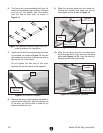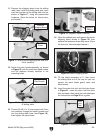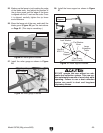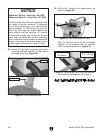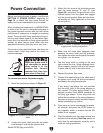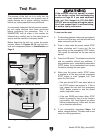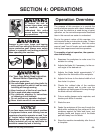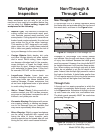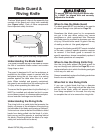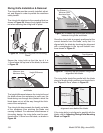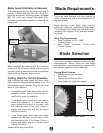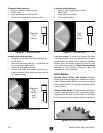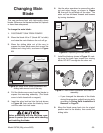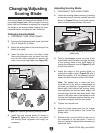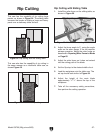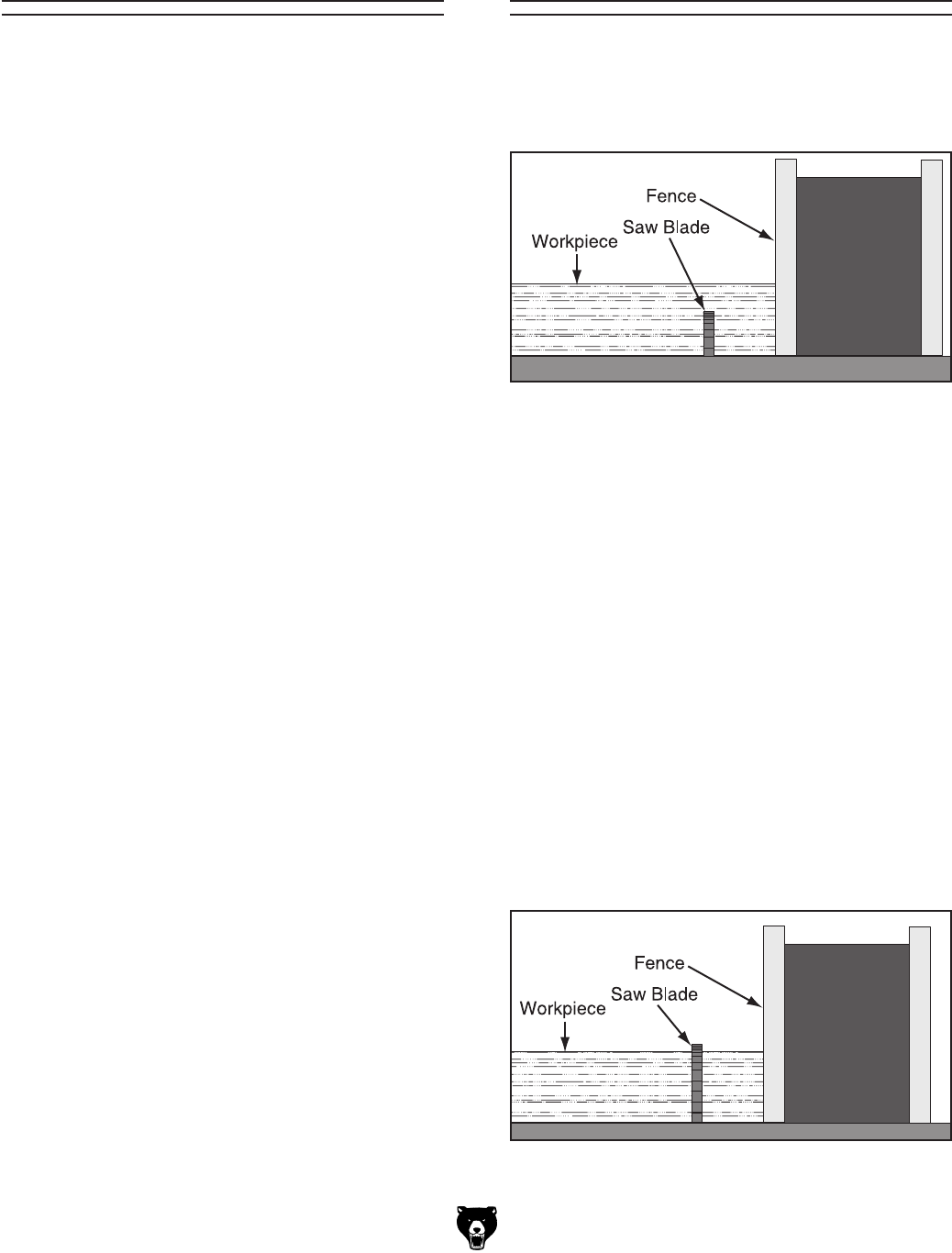
Non-Through &
Through Cuts
Examples of non-through cuts include dadoes
and rabbets. Non-through cuts have a higher risk
of injury from kickback because the blade guard
must be removed. However, the riving knife MUST
be installed because it still provides some protec-
tion. When making non-through cuts with a dado
blade, do not attempt to cut the full depth in one
pass. Instead, take multiple light passes to reduce
the load on the blade. A dado blade smaller than
10" will require removal of the riving knife, because
the riving knife will be higher than the blade.
Non-Through Cuts
Figure 35.
A non-through cut is a sawing operation where
the blade does not protrude above the top face of
the wood stock, as shown in the Figure below.
Figure 36.
Through Cuts
A through cut is a sawing operation in which the
workpiece is completely sawn through, as shown
in the Figure below. Examples of through cuts are
rip cuts, cross cuts, miter cuts, and beveled cuts.
The blade guard assembly MUST be used when
performing through cuts.
Workpiece
Inspection
Before cutting, inspect all
workpieces for the following:
• Material Type:Thismachineisintendedfor
cutting natural and man-made wood prod-
ucts, laminate covered wood products, and
someplastics.Cuttingdrywallorcementitious
backerboardcreatesextremelyfinedustand
may reduce the life of the motor bearings.
ThismachineisNOTdesignedtocutmetal,
glass,stone,tile,etc.;cuttingthesematerials
withatablesawgreatlyincreasestheriskof
injuryanddamagetothesaworblade.
• Foreign Objects: Nails, staples, dirt,rocks
and other foreign objectsare often embed-
ded in wood. While cutting, these objects
canbecomedislodgedandhittheoperator,
cause kickback, or break the blade, which
mightthenflyapart.Alwaysvisuallyinspect
yourworkpiecefortheseitems.Iftheycan’t
beremoved,DONOTcuttheworkpiece.
• Large/Loose Knots: Loose knots can
becomedislodged duringthe cuttingopera-
tion. Large knots can cause kickback and
machine damage. Choose workpieces that
donothavelarge/looseknotsorplanahead
toavoidcuttingthroughthem.
• Wet or “Green” Stock:Cuttingwoodwitha
moisturecontentover20%causesunneces-
sarywearontheblades,increasestheriskof
kickback,andyieldspoorresults.
• Excessive Warping:Workpieceswithexces-
sivecupping,bowing,ortwistingaredanger-
ous
to cut because they are unstable and
maymoveunpredictablywhenbeingcut.
• Minor Warping:Slightlycuppedworkpieces
can be safely supported with cupped side
facing the table or fence; however, work-
piecessupportedonthebowedsidewillrock
duringthecut,whichcouldcausekickback.



